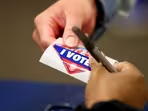Naomi Campbell Shades “Other Lady” Anna Wintour in Award Speech
Naomi Campbell doesn’t think Anna Wintour’s latest move was very in vogue.
While the Vogue editor-in-chief was supposed to award the supermodel with the Fashion Icon Award at Harlem’s Fashion Row’s Style Awards Sept. 3, she ultimately passed the presentation baton to Harper’s Bazaar editor Samira Nasr due to Naomi’s tardiness.
“I am a very punctual person,” Anna explained in her speech, via a video shared to X, formerly Twitter. “I have the honor of presenting tonight to someone who is often late.”
And while Anna also reportedly lauded the 54-year-old for her “bold” and “bright” personality, she didn’t stick around the stage for Naomi to claim her award—or listen to her clap back in her acceptance speech.
“I want to say this,” Naomi said, directing her attention at Samira. “Everything’s going to work out the way it’s going to work out. It wasn’t my choice to have the other lady. I’d much rather have this.”
The model also admitted that Anna, 74, wasn’t far off with her anachronistic critique.
“Yes, Naomi’s always late,” she continued. “But I believe in my high power, and I want to thank my higher power for having me be here.”
E! News has reached out to reps for Anna Wintour but has not yet heard back.
Of course, Naomi is not the first person to be the subject of scrutiny from the British fashion icon. Anna—who has been the editor of Vogue since the late 1980s—is known for her polarizing dedication to her own decorum.
After all, in the 2022 biography Anna, author Amy Odell detailed how Anna is not too far off her The Devil Wears Prada counterpart Miranda Priestly (Meryl Streep). As former Vogue assistant Aimee Cho said in the biography, “Everything felt very true to life, but through a negative lens.”
Keep reading for all the similarities between Anna and Miranda.
After serving as one of Anna Wintour's two assistants from 1999 until 2000, Lauren Weisberger would use her time working for the Vogue editor-in-chief as the inspiration for her 2003 bestselling book The Devil Wears Prada, later adapted into a hit movie starring Meryl Streep as Wintour stand-in Miranda Priestly and Anne Hathaway as her overworked second assistant.
In Anna, author Amy Odell reports that the fashion icon had a surprising reaction when she discovered Weisberger was writing a novel: "'I cannot remember who that girl is,'" former Vogue managing editor Laurie Jones recalled her saying.
After the book's release, Aimee Cho, who was Wintour's assistant at the time, said, "Everything felt very true to life, but through a negative lens. I always understood that [Anna] would deal with it, and she would deal with it well."
While Wintour read the book, Jones told Odell that "she was sort of bemused" and "wasn't bothered by it at all." Her other friend William Norwich added that Wintour "really didn't care" about the book even after it became a sensation. "I don't think Anna is as interested in the cultural phenomenon that she is as the rest of us are," Norwich explained.
Still, that doesn't mean some of the details that were included in the book and movie weren't based on real-life details...
During most of her tenure as editor-in-chief of Vogue, Wintour has had two or three assistants at a time. Odell broke down what their varied responsibilities looked like in the 2010s through background sources.
"The first assistant managed the other two, handled her schedule, and was the primary assistant Anna communicated with," Odell wrote. "The second assistant liaised with the caretakers and chef at her homes in Manhattan and Long Island coordinated her film screenings, and took care of her dogs."
She continued, "The third assistant ran errands, picked up theater tickets, helped with fashion week, and ordered Anna's clothes directly from designers, usually a customized runway look."
While the first assistant could enjoy the weekend, the second and third would alternate being on call, with Anna constantly sending various requests, often with no subject line.
When a new assistant began working for Anna, they were given a 21-page overview of how to handle most tasks, though it noted that the detailed guide was not comprehensive. Their work days began at 7 a.m. and could often turn into 12-hour shifts. Former assistant Meredith Asplundh revealed her starting salary was $25,000, while Laurie Schechter, one of Anna's first-ever assistants, shared that she lost eight pounds in her first two weeks.
Asplundh, who started as an intern at Condé Nast in 1993 and was hired to be Wintour's second assistant one month later, revealed that Wintour addressed her using the first assistant's name when she first began working at Vogue.
And Asplundh said she was told not to leave her desk, even to go to the bathroom, if the other assistant was not around—just like Andie, Anne Hathaway's character, in The Devil Wears Prada. But, Asplundh clarified, this was not a directive from the boss herself.
Asplundh explained, "It was kind of like lore, passed on from generation to generation."
Yes, one of Wintour's second assistants most important daily tasks was to deliver the Book—a mock-up of the magazine—to her home, according to Odell's interviews with several former assistants. That same employee would then greet Anna at her car when she arrived at the office the following morning to retrieve her notes, along with the other contents of her "AW bag," which was "a monogrammed L.L.Bean canvas tote with navy handles containing the Book, papers she had brought home to look at the night before, and her burgundy crocodile designer planner, which her assistants custom-ordered whenever she filled it up and needed a new one," per Odell.
As for the notes process, if Wintour approved a story for print, she would write her initials plus OK, which became known as an "AWOK" in the office."'Is it AWOK'd? Is it AWOK'd yet?' editors would parrot in frustration," Odell explained.
But once Wintour decided to kill something, whether it was a feature, a photoshoot or a trend, that was it. A juicy interview with Uma Thurman following her divorce from Gary Oldman in 1992 never ran because the initial shoot and the reshoot were not up to Wintour's standards, while Gwyneth Paltrow was photographed four times in three years before finally landing a cover in 1996.
Ain't no rest for the fashionable.
After speaking with several sources, Odell was able to break down Wintour's daily routine in the book, revealing the EIC usually wakes up at 5 a.m. to exercise—either a tennis lesson or a session with her personal trainer—before sitting down to get her hair and makeup done. She then is driven by a chauffeur to the Vogue office by 7 a.m., kicking off a day of meetings, run-throughs—"I think just the sheer fact that they had to wheel clothes into her office before any shoots was wildly different and unheard of," said former staffer Gabé Doppelt—and more. It wasn't unusual for Wintour to still be at the office at 11 p.m. during her early tenure as editor-in-chief.
Every morning, it was the responsibility of one of Wintour's assistants to make sure her daily breakfast—a whole-milk latte and a blueberry muffin from Starbucks—was waiting for her on her desk.
Like Miranda Priestly in the movie, Wintour would eat the same meal for lunch every day if she did not have a meeting out of the office: A rare steak and mashed potatoes, served on a plate instead of a takeout container, from the Royalton. "She'd take a few bites and then say, 'Take my plate, I'm done,'" Odell wrote.
And, according to her friend Miranda Brooks, Wintour later went on the "the diet of cream," which basically consisted of chocolate milkshakes, so she wouldn't get too thin.
In one of the movie's most memorable moments, Miranda cries in front of Andie over her divorce, a rare show of emotion from the ice queen. It turns out, the scene was remarkably similar to an experience then-Vogue event planner Stephanie Winston Wolkoff had with Wintour in London while she was in the midst of her late '90s split from husband David Schaffer.
"Was she sad? Of course she was sad," Winston Wolkoff told Odell. "Did she show it in the office a lot? No. She just kept going."
And though Winston Wolkoff had a real connection with Wintour, "as soon as I was in the office, it was like there was no personal relationship."
While Wintour never specifically told her staff what to wear, it was clear that she had certain sartorial expectations.
Asplundh told Odell that there were times when "she would glare at whatever I was wearing. It wasn't a glare like approval. It was sort of, What the hell is that? You could definitely tell when she was like, 'Why would you put those pants with that top?'"
In fact, some employees referred to this as The Look, Wintour's non-verbal way of assessing an ensemble.
"She would do that automatically. You would walk into her office, and she would start at your shoes and work the way up," former staffer Maggie Buckley said, admitting she started wearing Manolo Blahnik heels, Wintour's favorite, every day.
Odell reported that Wintour would screen every person who interviewed for a job at Vogue, checking out their outfits before hiring them.
Though Odell acknowledged Wintour developed a reputation for being "icy and scary and fabulous" and was given nicknames such as Nuclear Wintour and Wintour of Our Discontent, she spoke to several sources who shot down that characterization.
"People misinterpret her focus for coldness. But she's not cold, she's generous to a fault," Anna's personal friend Emma Soames said. "If it did not involve editing Vogue, she didn't address it. So she had no small talk."
And Gabé Doppelt, who was Wintour's right-hand woman for years, reflected on the pressure Wintour was under when she began her tenure at British Vogue in 1985. (Doppelt recalled the experience being so exhausting that she would sometimes lie down on the cold stone floor to rest when Anna went to lunch.)
"I was really wiped out from the sort of pressure of the job and the tension, and the animosity toward Anna that kind of leaked off onto me," Doppelt explained. "It must have been a thousand times worse for Anna."
And during her first stint at Vogue in 1983, serving as the fashion mag's first-ever creative director, Wintour was "cool as a cucumber," according to then-junior copywriter Lesley Jane Seymour. "A lot of those women at Vogue were terrifying. I don't remember her being terrifying. She got the work done and she was pleasant."
For the latest breaking news updates, click here to download the E! News AppDisclaimer: The copyright of this article belongs to the original author. Reposting this article is solely for the purpose of information dissemination and does not constitute any investment advice. If there is any infringement, please contact us immediately. We will make corrections or deletions as necessary. Thank you.
Title:Naomi Campbell Shades “Other Lady” Anna Wintour in Award Speech
Url:https://www.investsfocus.com







